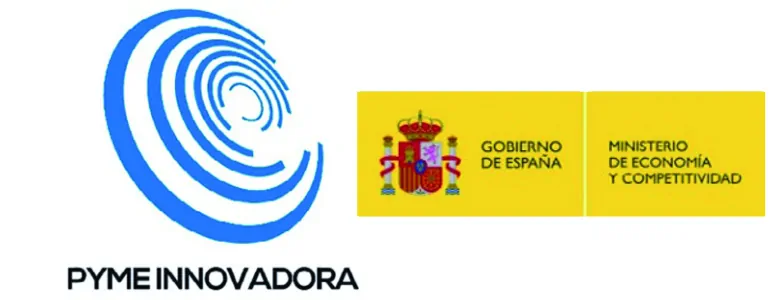
HORIZON EUROPE

 Europeo
Europeo
Expected Outcome:Projects are expected to contribute to the following outcomes:
Demonstration of the advantage of quantum gravimeters in innovative operational settings, delivering results beyond the state-of-the-art for real-world use cases. These operational settings should include a) an onboard gravimeter and b) terrestrial networks of gravimeters, consisting of at least eight gravimeters in total.Identification of new use cases and provision of innovative quantum gravimeter services for these use cases.The network of quantum gravimeters developed and optimised as part of the project should be ready for integration into a multi-country initiative such as a European Digital Infrastructure Consortium. Scope:Quantum gravimeters (gravity sensors) can deliver high-sensitivity, real-time, non-invasive gravity measurements, with much greater precision than classical gravimeters. They have started to demonstrate their disruptive potential in many application sectors, including Earth observation and civil engineering. The unmatched precision offered by quantum gravimeters will only become more important in a world where extreme weather events are becoming more and more commo...
ver más
Expected Outcome:Projects are expected to contribute to the following outcomes:
Demonstration of the advantage of quantum gravimeters in innovative operational settings, delivering results beyond the state-of-the-art for real-world use cases. These operational settings should include a) an onboard gravimeter and b) terrestrial networks of gravimeters, consisting of at least eight gravimeters in total.Identification of new use cases and provision of innovative quantum gravimeter services for these use cases.The network of quantum gravimeters developed and optimised as part of the project should be ready for integration into a multi-country initiative such as a European Digital Infrastructure Consortium. Scope:Quantum gravimeters (gravity sensors) can deliver high-sensitivity, real-time, non-invasive gravity measurements, with much greater precision than classical gravimeters. They have started to demonstrate their disruptive potential in many application sectors, including Earth observation and civil engineering. The unmatched precision offered by quantum gravimeters will only become more important in a world where extreme weather events are becoming more and more common, and where there is an even greater need to observe and track resources that are located up to several kilometres under the ground, such as water basins, gas deposits or magma concentrations.
Under this action, a consortium of public laboratories, metrology institutes, scientific institutes and/or other relevant partners is expected to carry out innovation activities to develop and demonstrate the practical viability and usefulness of a network of quantum gravimeters in specific operational settings, both in the form of a terrestrial network and also mounted on flying carriers (these could include innovative carriers such as drones, balloons or other flying carriers) and/or on ships or other seaborne carriers. Mounted gravimeters are to be deployed flexibly in different locations as needed, in order to provide gravity maps of potential areas of interest and confirm where more detailed exploration is worth pursuing. Terrestrial networks are then to be deployed at those specific sites to enable high-resolution, reproductible measurements to be performed over time to monitor and investigate areas of interest (such as volcanoes or zones with underground reservoirs). In all cases, gravimeters should be operated in order to deliver results for innovative use cases in areas including, but not limited to, Earth observation, geodesy, oceanography, hydrology, volcano monitoring and civil engineering.
Proposals should seek to:
Deliver an extended proof-of-concept for deploying quantum gravimeters in innovative operational settings, including a) as terrestrial networks of several (8 to 10 in total) quantum gravimeters (possibly in hybrid mode with classical gravimeters and/or other types of quantum sensors such as magnetometers) and b) as individual quantum gravimeters mounted on flying carriers (which could include innovative carriers such as drones, balloons or other flying carriers) and/or on ships or other seaborne carriers. The proposal should detail the actions planned to procure gravimeters capable of carrying out the tasks needed to achieve the project’s deliverables, including the adaptation of these gravimeters for use on mounted carriers.Develop the components, tools, techniques and processes for optimising and industrializing quantum gravimeters for these innovative configurations, by enhancing their performance according to parameters such as resolution, sensitivity, precision, reproducibility, integration time, autonomy, footprint, robustness, compactness, and real-time data processing. They should seek to optimise the network configuration and carriers for operating quantum gravimeters and assess exhaustively and reproducibly the performances of the systems that are designed.Operate the optimised quantum gravimeters and their network infrastructure and carriers to deliver scientific results beyond the state-of-the-art (including in terms of precision) for use cases in areas including, but not limited to, Earth observation, geodesy, oceanography, hydrology, volcano monitoring and civil engineering. They should demonstrate the added value of operating mounted gravimeters and terrestrial networks of gravimeters, if possible in combination (e.g. by analysing areas of interest sequentially).Provide a plan for the long-term operation of the infrastructure beyond the life of the project, involving other EU actors working in relevant areas, so that it is ready for integration into a multi-country initiative such as a European Digital Infrastructure Consortium. They should also provide an extensive review of use cases that can be addressed by quantum gravimeters for various configurations. Interoperability of the data for potential further reuse with European data ecosystem initiatives including, but not limited, to the Data Spaces (funded under the Digital Europe Programme), the European Open Science Cloud, and Destination Earth, should be duly taken into account, while respecting all applicable legislation and access and using rights distinguished between different user groups (government, cooperations, research institutes etc.) for the data generated. They should also demonstrate how other types of quantum sensors could be integrated into the infrastructure. The Commission considers that proposals with an overall duration of 36-48 months would allow these outcomes to be addressed appropriately. Nonetheless, this does not preclude the submission and selection of proposals requesting other durations.
Proposals should also cover synergies with other relevant European initiatives and programmes, including the Quantum Technologies Flagship and the planned development and deployment of a European space gravimetry infrastructure under Horizon Europe Cluster 4 Destination 5 (Open strategic autonomy in developing, deploying and using global space-based infrastructures, services, applications and data). In addition, they should contribute to spreading excellence across Europe; for example, through the involvement of Widening Countries.
The intended users of the infrastructure built by the project and the services it offers are entities established in the eligible countries.
In this topic the integration of the gender dimension (sex and gender analysis) in research and innovation content is not a mandatory requirement.
ver menos
Características del consorcio
 :
La ayuda es de ámbito europeo, puede aplicar a esta linea cualquier empresa que forme parte de la Comunidad Europea.
:
La ayuda es de ámbito europeo, puede aplicar a esta linea cualquier empresa que forme parte de la Comunidad Europea.
Características del Proyecto
Gastos relacionados con el personal que trabaja directamente en el proyecto basado en las horas efectivas dedicadas, basado en el coste empresa y ratios fijos para determinados empleados como los dueños de la compañía.
Pagos a terceros externos para realizar tareas específicas que no pueden ser realizadas por los beneficiarios del proyecto.
Incluyen la adquisición de equipos, amortizaciones, material, licencias u otros bienes y servicios necesarios para la ejecución del proyecto
Gastos diversos como costes financieros, certificados de auditoría o participación en eventos no cubiertos por otras categorías
Gastos generales no asignables directamente al proyecto (como electricidad, alquiler u oficina), calculados como un 25% fijo sobre los costes directos elegibles (excepto subcontratación).
Características de la financiación
Para el presupuesto subvencionable la intensidad de la ayuda en formato fondo perdido podrá alcanzar desde un 70% hasta un 100%.
Información adicional de la convocatoria

Otras ventajas
Ayudas Similares

| Próximamente

| Próximamente

| Próximamente

